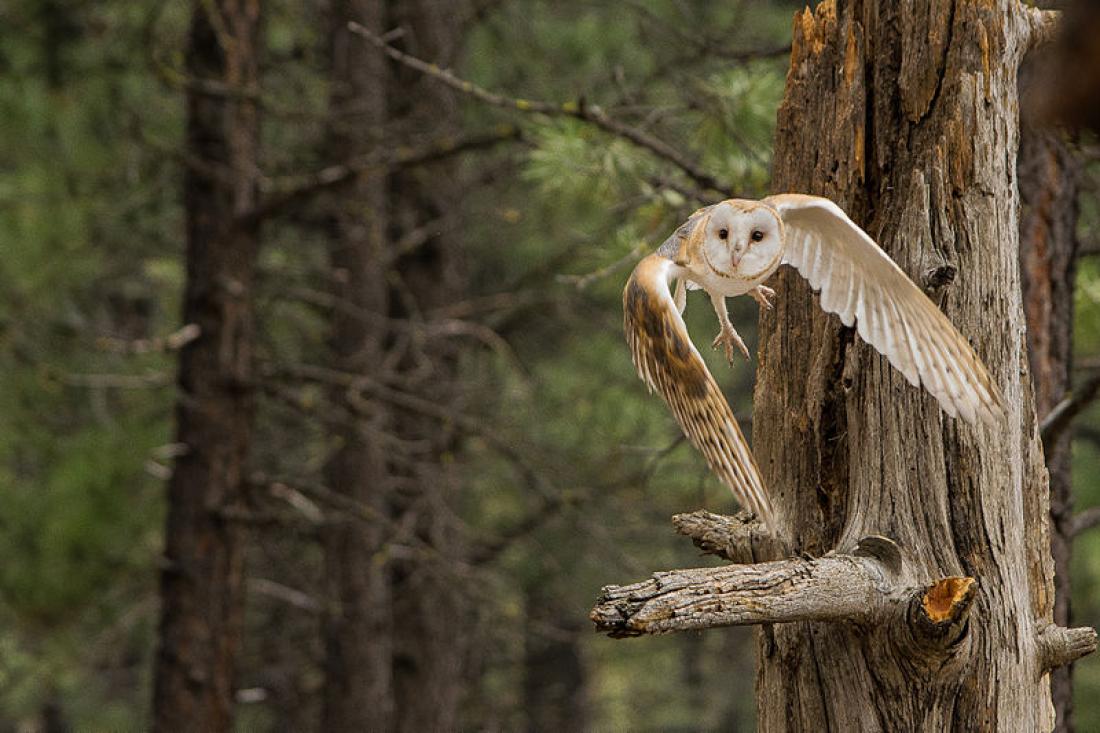Researchers from Japan and China studied the serrations in the leading edge of owls’ wings, gaining new insight into how they work to make the birds’ flight silent.
Researchers from Japan and China studied the serrations in the leading edge of owls’ wings, gaining new insight into how they work to make the birds’ flight silent.
Their results, published today in the journal Bioinspiration and Biomimetics, point towards potential mechanisms for noise suppression in wind turbines, aircraft, multi-rotor drones and other machines.
Lead author Professor Hao Liu, from Chiba University, Japan, said: “Owls are known for silent flight, owing to their unique wing features, which are normally characterised by leading-edge serrations, trailing-edge fringes and velvet-like surfaces.
“We wanted to understand how these features affect aerodynamic force production and noise reduction, and whether they could be applied elsewhere.”
The researchers analysed owl-inspired feather wing models with and without leading edge serrations, by combining large-eddy simulations – a mathematical model for turbulence used in computational fluid dynamics to simulate air flows – and Particle-Image Velocimetry (PIV) and force measurements in a low-speed wind tunnel.
They discovered leading-edge serrations can passively control the transition between laminar, or streamline air flow, and turbulent air flow over the upper wing surface, at angles of attack (AoA) between zero and 20 degrees. This means they play a crucial role in aerodynamic force and sound production.
Professor Liu said: “We found, however, that a trade-off exists between force production and sound suppression. Serrated leading-edges reduce aerodynamic performance at lower AoAs than 15° compared to clean leading-edges, but can achieve noise reduction and aerodynamic performance at AoAs above 15°, which owl wings often reach in flight.
“These owl-inspired leading edge serrations, if applied to wind turbine blades, aircraft wings or drone rotors, could provide a useful biomimetic design for flow control and noise reduction.
“At a time when issues of noise are one of the main barriers to the building of wind turbines, for example, a method for reducing the noise they generate is most welcome.”
ENDS
Contact
For further information, or spokesperson contact details, please contact: Simon Davies, Senior PR Officer, IOP Publishing Tel 0117 930 1110 Email [email protected]
About Bioinspriation & Biomimetics
Bioinspiration & Biomimetics publishes research that discovers and uses principles from natural systems to create physical models, engineering systems and technological designs.
About IOP Publishing
IOP Publishing provides publications through which leading-edge scientific research is distributed worldwide. IOP Publishing is central to the Institute of Physics, a not-for-profit society. Any financial surplus earned by IOP Publishing goes to support science through the activities of the Institute. Go to http://ioppublishing.org (link below) or follow us @IOPPublishing.
About the Institute of Physics
The Institute of Physics is a leading scientific society. We are a charitable organisation with a worldwide membership of more than 50,000, working together to advance physics education, research and application. We engage with policymakers and the general public to develop awareness and understanding of the value of physics and, through IOP Publishing, we are world leaders in professional scientific communications. Visit us at www.iop.org (link below) Follow IOP on Twitter via @PhysicsNews



